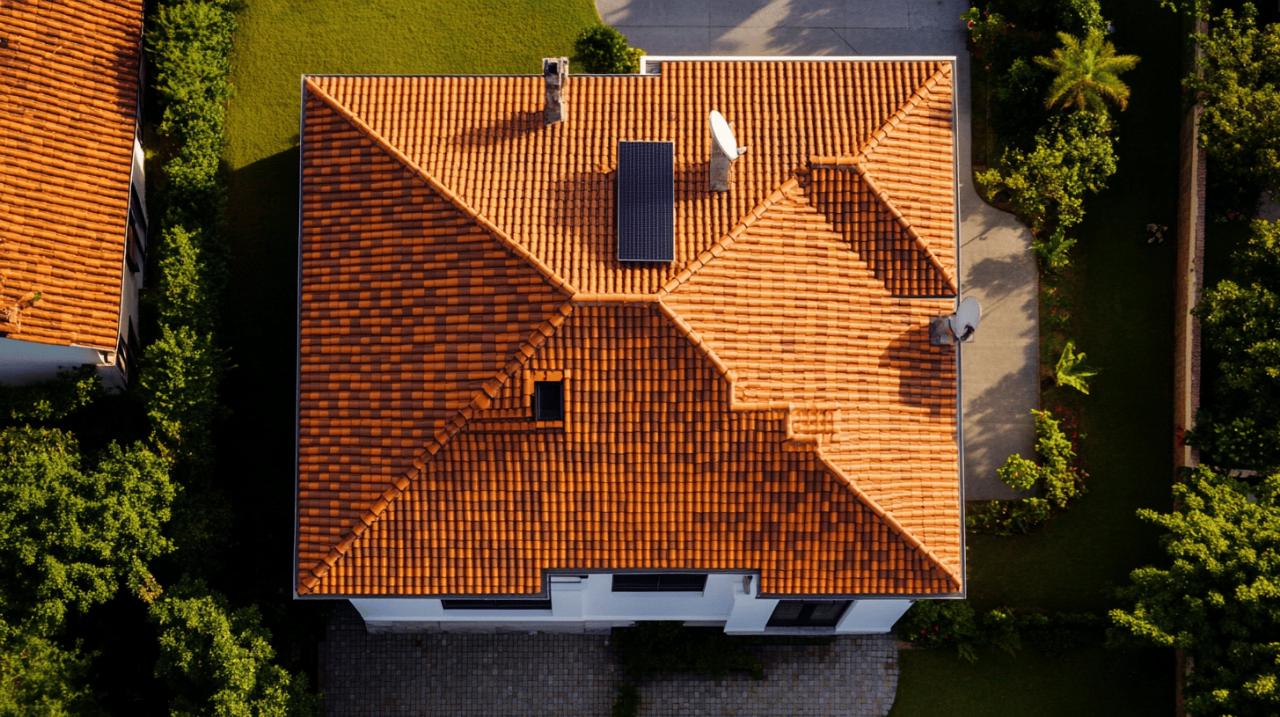Contemplating a roofing project for your 140 square metre property requires careful consideration of numerous factors that extend far beyond simply selecting attractive materials. The interplay between roof pitch, design complexity, material choices, and labour demands creates a nuanced financial landscape that homeowners must navigate with both prudence and foresight. Understanding these elements empowers you to make informed decisions that balance immediate expenditure against long-term value and performance.
Material Selection and Cost Implications for Your 140m2 Roof
Comparing Traditional and Modern Roofing Materials: Tiles, Slate, and Steel Options
The choice of roofing material fundamentally shapes both the aesthetic character of your property and the financial commitment required. Asphalt shingles represent the most budget-conscious option, typically costing between £80 and £120 per 100 square feet, offering a serviceable lifespan of 15 to 30 years depending on quality and environmental conditions. For those seeking enhanced durability and modern aesthetics, metal roofing presents a compelling alternative, with costs ranging from £240 to £640 per 100 square feet. This premium reflects not only superior longevity, often exceeding 50 years, but also notable energy efficiency benefits that manifest in reduced cooling costs. Steel tray roofs exemplify this modern approach, combining structural integrity with contemporary design sensibilities.
Traditional slate tiles occupy the upper echelons of roofing materials, commanding prices between £480 and £800 per 100 square feet. This substantial investment purchases unmatched elegance and exceptional durability, with properly installed slate roofs lasting well beyond a century. The weight of slate and certain tile materials necessitates structural reinforcement in many properties, adding further to project costs but ensuring the building can safely support the chosen covering. Clay tiles, whether baked earth varieties or more refined alternatives, offer a middle ground between affordability and distinction, bringing Mediterranean or rustic character to British homes whilst maintaining reasonable longevity.
Longevity and value: balancing initial investment against material lifespan
Evaluating roofing materials purely on initial cost obscures the more nuanced calculation of value over time. Whilst asphalt shingles demand less upfront capital, their shorter lifespan means homeowners may face two or even three replacements over the period a single metal or slate roof endures. This cyclical expenditure, compounded by inflation and the escalating costs of labour, often renders premium materials more economical across decades of ownership. Metal roofing exemplifies this principle, with its superior durability and energy efficiency offsetting higher installation costs through reduced maintenance requirements and lower heating bills.
The architectural complexity of your property influences material suitability beyond mere aesthetics. Very steep roofs cannot accommodate standard asphalt shingles, which risk sliding under gravity and weathering. Such installations require luxury asphalt, synthetic alternatives, or cedar shake shingles specifically engineered to maintain position on precipitous slopes. Conversely, low-sloped roofs with pitches of 2/12 or gentler cannot effectively shed water when covered with traditional shingles, necessitating membrane or metal roofing systems that cost between £12 and £16 per square foot compared to the £4 to £6 typical of asphalt installations. These material constraints transform roof pitch from a design consideration into a cost determinant.
Labour, framework, and essential structural considerations
The True Cost of Skilled Roofing Labour and Framework Repairs
Labour typically constitutes up to 60 percent of total roofing expenditure, reflecting the specialised skills, physical demands, and safety considerations inherent in the profession. Roof pitch directly influences labour costs through its impact on working conditions and project duration. Steeper roofs require extensive safety measures including additional scaffolding, harness systems, and slower, more deliberate work practices that extend project timelines and accumulate labour hours. The square footage of steeply pitched roofs exceeds the footprint of the building they cover, as the measurement follows the angled plane rather than horizontal projection. A 4/12 pitch, for instance, increases actual roofing area compared to the floor plan beneath, demanding proportionately more materials and installation time.
Structural framework condition profoundly affects final costs, often emerging as the source of unexpected budget overruns. Decking, rafters, and fascia boards deteriorated by moisture, age, or pest activity require replacement before new roofing can be installed. Competent contractors assess framework integrity during initial inspections, but concealed damage may only become apparent during tear-off phases when old materials are removed. Budgeting should incorporate contingency allowances for such discoveries, typically amounting to 10 to 15 percent of the estimated project cost. The structural reinforcement necessary for heavyweight materials like slate or tile represents a planned rather than surprise expense, but one that substantially influences the viability of certain aesthetic choices.
Scaffolding Requirements and Hidden Expenses in Your Roofing Project
Scaffolding costs vary considerably based on property height, roof complexity, and site accessibility. Detached properties with generous surrounding space incur lower scaffolding expenses than terraced homes or those with limited access, where equipment must be assembled with greater ingenuity and labour intensity. The presence of architectural features such as chimneys, skylights, and dormer windows complicates scaffolding arrangements whilst simultaneously adding to labour costs through the precision work required to weatherproof these intersections and transitions.
Hidden expenses accumulate from sources easily overlooked during initial budgeting. Permits and inspection fees, whilst varying by local authority jurisdiction, can range from several hundred to over a thousand pounds. Disposal fees for removed materials represent another inevitable cost, with tear-off projects generating substantial volumes of waste requiring proper environmental handling. Underlayment installation, whilst essential for waterproofing and longevity, adds both material and labour costs. Ventilation systems, critical for preventing moisture accumulation and extending roof lifespan, require planning and integration that influence overall expenditure. These ancillary expenses, individually modest, collectively represent a significant proportion of final costs that catch unprepared homeowners off guard.
Energy efficiency and long-term savings through proper insulation
Thermal Insulation Options and Protective Screening for British Weather
 Roofing projects present optimal opportunities to enhance thermal performance through upgraded insulation, addressing one of the primary sources of heat loss in British homes. Modern insulation materials achieve remarkable thermal resistance whilst maintaining manageable thickness and weight, transforming attic spaces into more usable environments and reducing heating expenditure by substantial margins. Installing protective screening beneath tiles provides an additional barrier against wind-driven rain and snow, particularly valuable in exposed locations where weather assaults roofing from multiple angles during storms.
Roofing projects present optimal opportunities to enhance thermal performance through upgraded insulation, addressing one of the primary sources of heat loss in British homes. Modern insulation materials achieve remarkable thermal resistance whilst maintaining manageable thickness and weight, transforming attic spaces into more usable environments and reducing heating expenditure by substantial margins. Installing protective screening beneath tiles provides an additional barrier against wind-driven rain and snow, particularly valuable in exposed locations where weather assaults roofing from multiple angles during storms.
Energy-efficient roofing materials certified to Energy Star standards reflect solar radiation rather than absorbing it, maintaining cooler interior temperatures during summer months. This cool roof technology can reduce cooling energy costs by 10 to 50 percent, a benefit that extends beyond immediate comfort to long-term financial savings and reduced environmental impact. The integration of roof windows during renovation projects introduces natural light whilst offering potential qualification for eco-friendly subsidies, provided installations meet requisite thermal performance standards. Proper water evacuation systems, incorporating adequate drainage capacity and strategic placement, protect insulation effectiveness by preventing moisture infiltration that degrades thermal resistance.
Grants, Zero Rate Loans, and Subsidies for Eco-Friendly Roofing Solutions
Various government schemes and local authority programmes offer financial assistance for roofing improvements that enhance energy efficiency and reduce carbon emissions. Zero rate loans specifically targeting eco-friendly home improvements enable homeowners to undertake necessary work without the burden of interest charges, spreading costs across manageable repayment periods. Grants for insulation upgrades and renewable integration, whilst subject to eligibility criteria and funding availability, can offset substantial portions of project expenses.
Investigating available subsidies requires engagement with local authorities, energy companies, and specialist advisory services that navigate the evolving landscape of environmental incentives. Documentation requirements and application processes demand attention to detail, but the potential financial benefits justify the administrative effort. Contractors experienced in eco-friendly installations often provide guidance through subsidy applications, leveraging their familiarity with qualifying materials and installation standards. The long-term savings from reduced energy consumption, combined with upfront financial assistance, transform energy-efficient roofing from an aspirational choice into a financially pragmatic decision.
Budgeting realistically: from quotations to final costs
Breaking down your quote: materials, labour, and drainage systems
Comprehensive quotations itemise every component of the proposed work, distinguishing between materials, labour, scaffolding, permits, disposal, and ancillary elements. This transparency enables meaningful comparison between contractors whilst highlighting areas where specifications differ. Materials should be identified by type, quality grade, and quantity, allowing independent verification of pricing through supplier enquiries. Labour quotations merit scrutiny regarding the experience and qualifications of the workforce, as superior craftsmanship justifies premium rates through superior outcomes and enhanced warranty protection.
Drainage system specifications within quotations warrant particular attention, as inadequate water evacuation compromises even the finest roofing materials and installation work. Guttering capacity, downpipe placement, and surface water management collectively determine whether rainfall departs the property efficiently or lingers to cause damp, leaks, and structural deterioration. The workmanship warranty offered by contractors reflects their confidence in both materials and installation quality, with longer warranty periods requiring premium materials and meticulous installation practices that justify higher initial costs through reduced long-term risk.
Realistic Budget Expectations: Understanding the £7,000 to £21,000 Range
For a 140 square metre property, realistic budgeting encompasses a range from approximately £7,000 to £21,000 or beyond, depending upon material selection, framework condition, insulation upgrades, and design complexity. Projects at the lower end of this spectrum typically involve asphalt shingles on straightforward roof geometries with minimal framework repairs and basic insulation standards. Mid-range projects incorporating metal roofing, enhanced insulation, and moderate framework refurbishment settle around £12,000 to £15,000. Premium installations featuring slate tiles, comprehensive structural work, advanced insulation systems, and complex architectural details readily exceed £20,000.
Obtaining multiple quotations from reputable contractors provides essential perspective on market rates and specification variations. References from previous clients offer invaluable insights into contractor reliability, communication, and problem-solving capabilities when unexpected challenges arise. Negotiation remains appropriate, particularly regarding project timing and specification adjustments, though excessive haggling risks alienating quality contractors or encouraging corner-cutting that undermines long-term performance. Scheduling work during off-peak periods such as late winter or early spring often secures more competitive rates as contractors seek to maintain workforce continuity during traditionally quieter months.
Establishing a contingency reserve of 10 to 15 percent beyond quoted costs provides financial cushioning against unforeseen framework repairs, specification enhancements identified during the work, or material price fluctuations in extended projects. This prudent approach prevents the stress and compromise that accompany budget exhaustion mid-project, ensuring quality standards remain uncompromised regardless of discoveries made during execution. Regular maintenance following installation, consuming approximately 1 to 4 percent of property value annually, protects the substantial investment and maximises the lifespan of your new roof, distributing costs predictably rather than confronting periodic crises demanding emergency expenditure.


